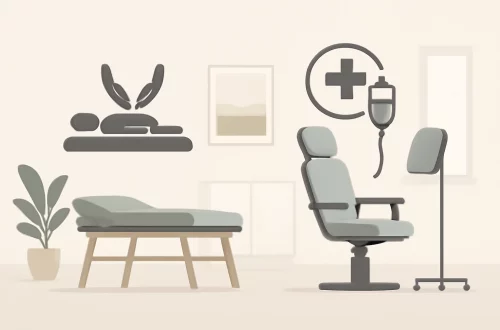
Understanding Hair Porosity: Definition and Importance for Hair Care
Understanding hair care is essential for anyone looking to maintain healthy and vibrant locks. Among the myriad of factors that contribute to hair health, one often overlooked aspect is hair porosity. This refers to the hair’s ability to absorb and retain moisture, which can significantly impact the effectiveness of hair care products and routines.
Hair porosity is influenced by a variety of factors, including genetic predisposition, environmental exposure, and the overall health of the hair. Understanding your hair’s porosity can help you make informed decisions about the products you use and the techniques you employ in your hair care regimen. Whether you’re battling dryness, frizz, or lack of shine, recognizing your hair’s porosity level can be the key to unlocking its true potential.
In a world where hair care products are marketed with promises of miraculous results, the importance of knowing how your hair interacts with moisture cannot be overstated. By learning more about hair porosity, you can tailor your hair care practices to better suit your individual needs, leading to healthier, more manageable hair.
What is Hair Porosity?
Hair porosity is defined as the hair’s ability to absorb and retain moisture. It is influenced by the structure of the hair cuticle, which is the outermost layer of the hair strand. The cuticle is made up of overlapping scales that can open and close, thereby regulating how much moisture enters and exits the hair shaft.
There are three main types of hair porosity: low, medium, and high. Low porosity hair has a tightly bound cuticle structure that makes it difficult for moisture to penetrate. This type of hair often feels dry and may require specific products that can help open the cuticle, allowing moisture to enter.
Medium porosity hair, also known as normal porosity, has a cuticle that is slightly raised, allowing for optimal moisture absorption and retention. This hair type typically responds well to a variety of hair care products and requires minimal effort to maintain its health.
High porosity hair has a cuticle that is either damaged or raised, allowing moisture to enter easily but also leading to quicker moisture loss. This type of hair often appears frizzy and is more susceptible to damage from environmental factors and styling practices.
Understanding your hair porosity is essential for selecting the right products and developing an effective hair care regimen. It can also help you identify any underlying issues that may be affecting your hair’s health.
How to Determine Your Hair Porosity
Determining your hair porosity is relatively simple and can be done using a few different methods. One of the most common techniques is the “water test.” To perform this test, start by filling a glass with water and taking a few strands of clean, dry hair. Place the hair strands in the water and observe what happens.
If your hair floats on the surface for an extended period, it is likely low porosity, indicating that moisture has a hard time penetrating. If your hair sinks to the bottom quickly, it is a sign of high porosity, suggesting that moisture can enter but not be retained. If your hair strands hover in the middle, this indicates medium porosity.
Another method to determine porosity involves examining your hair’s texture and behavior. Low porosity hair often feels waxy or sticky and may take longer to dry after washing. Medium porosity hair generally dries at a normal rate and feels smooth. High porosity hair tends to dry quickly and may feel dry or rough to the touch.
It’s important to note that porosity can change over time due to various factors such as heat styling, chemical treatments, and environmental exposure. Regularly assessing your hair’s porosity can help you adjust your hair care routine accordingly.
The Impact of Hair Porosity on Product Choice
Understanding your hair’s porosity can significantly influence the types of products you choose to use. Different porosity levels require different formulations to achieve optimal moisture balance and overall hair health.
For low porosity hair, it’s essential to use lightweight products that won’t weigh the hair down. Look for water-based moisturizers and avoid heavy oils or creams that can sit on the hair without being absorbed. Heat can also be beneficial for low porosity hair, as it helps to open the cuticle, allowing products to penetrate more effectively.
Medium porosity hair is quite versatile and can benefit from a wide range of products. It typically responds well to both moisturizing and protein-based products. This hair type can handle various styling techniques and products without becoming overly dry or damaged.
High porosity hair, on the other hand, often requires richer, more hydrating products to combat its tendency to lose moisture quickly. Look for oils and creams that provide a protective barrier to lock in hydration. Additionally, protein treatments can help strengthen high porosity hair, repairing damage and reducing frizz.
By tailoring your product choices to your hair’s porosity, you can improve its overall health and appearance. This personalized approach not only enhances the effectiveness of your hair care routine but also helps to prevent damage and maintain moisture balance.
Tips for Caring for Your Hair Based on Porosity
Caring for your hair according to its porosity level can lead to healthier, more manageable locks. Here are some tips tailored for each porosity type:
For low porosity hair, consider incorporating heat into your routine. Using a warm towel or a heat cap can help open the cuticles, allowing deep conditioners and treatments to penetrate more effectively. Additionally, focus on using lighter products and avoid heavy oils that may build up over time.
If you have medium porosity hair, maintain its health by alternating between moisturizing and protein treatments. This balance helps to keep the hair strong yet hydrated. Regular trims can also help prevent split ends and maintain the overall health of your hair.
For high porosity hair, moisture retention is key. Use leave-in conditioners and deep conditioning masks regularly to keep your hair hydrated. Additionally, consider implementing the “LOC” method (Liquid, Oil, Cream) for sealing in moisture after washing. This technique can help reduce frizz and keep your hair looking smooth and shiny.
Regardless of your hair porosity, always remember to be gentle when handling your hair. Avoid excessive heat styling and harsh treatments that can lead to damage. Instead, focus on nurturing your hair with the right products and techniques tailored to its unique needs.
In conclusion, understanding hair porosity is vital for effective hair care. By recognizing your hair’s porosity level and adjusting your routines and product choices accordingly, you can achieve healthier, more vibrant hair.
**Disclaimer:** This article is not intended as medical advice. For health concerns related to your hair or scalp, please consult a qualified healthcare professional.




